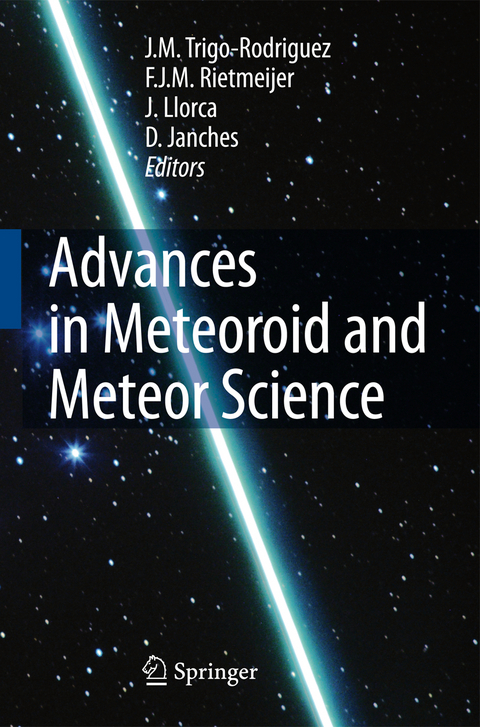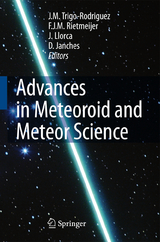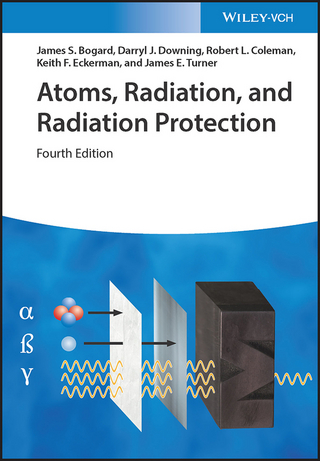Advances in Meteoroid and Meteor Science
Springer-Verlag New York Inc.
978-0-387-78418-2 (ISBN)
Josep M. Trigo-Rodriguez Ae Frans J. M. Rietmeijer Ae Jordi Llorca Ae Diego Janches Originally published in the journal Earth, Moon, and Planets, Volume 102, Nos 1-4. DOI: 10. 1007/s11038-008-9228-0 Springer Science+Business Media B. V. 2008 This volume is a compilation of articles that summarize the most recent results in meteor, meteoroid and related ?elds presented at the Meteoroids 2007 conference held in the impressive CosmoCaixa Science Museum in Barcelona, Spain. The conference took place between 11 and 15 of June and was organized by the Institute of Space Sciences (Consejo Superior de Investigaciones Cient?'?cas, CSIC) and the Institut d'Estudis Espacials de Catalunya (IEEC). Researchers in meteor science and supporting ?elds representing more than 20 countries participated at this international conference where 126 presentations were delivered in oral and poster forms. The 69 papers included in this volume represent the work of 154 authors from about 70 different institutions across the globe. The Me- oroids conference is an international meeting that takes place every 3 years since the ?rst one held in Bratislava, Slovakia in 1994. The 2007 meeting was the ?rst one where samples of a comet, 81P/Wild 2, were available from the NASA Stardust mission, and results from laboratory characterizations were presented and discussed.
Seemingly aware of the upcoming meeting a bolide was observed over La Mancha, Spain, on May 10.
Preface.- The IAU Meteor Shower Nomenclature Rules.- Current Status of the Photographic Meteoroid Orbits Database and a Call for Contributions to a New Version.- The Dynamics of Low-Perihelion Meteoroid Streams.- Meteor Outburst Profiles and Cometary Ejection Models.- High Inclination Meteorite Streams can Exist.- Motion of a Meteoroid Released from an Asteroid.- Searching for the Parent of the Tunguska Cosmic Body.- Orbital Evolution of P?íbram and Neuschwanstein.- Meteors in the IAU Meteor Data Center on Hyperbolic Orbits.- Meteoroid Stream Searching: The Use of the Vectorial Elements.- Directional Variation of Sporadic Meteor Activity and Velocity.- Meteor Showers Originated from 73P/Schwassmann–Wachmann.- The Lyrid Meteor Stream: Orbit and Structure.- Model Radiants of the Geminid Meteor Shower.- The Orionid Meteor Shower Observed Over 70 Years.- Activities of Parent Comets and Related Meteor Showers.- Search for Past Signs of October Ursae Majorids.- The P/Halley Stream: Meteor Showers on Earth, Venus and Mars.- Multi-station Video Orbits of Minor Meteor Showers.- Exceptional Fireball Activity of Orionids in 2006.- Video Observations of the 2006 Leonid Outburst.- Predictions for the Aurigid Outburst of 2007 September 1.- Characterization of the Meteoroid Spatial Flux Density during the 1999 Leonid Storm.- On the Substantial Spatial Spread of the Quadrantid Meteoroid Stream.- Lunar Gravitational Focusing of Meteoroid Streams and Sporadic Sources.- Comparison of Meteoroid Flux Models for Near Earth Space.- Dynamical Effects of Mars on Asteroidal Dust Particles.- Determination of the Velocity of Meteors Based on Sinodial Modulation and Frequency Analysis.- The Canadian Meteor Orbit Radar Meteor Stream Catalogue.- Infrasonic Observations of Meteoroids: PreliminaryResults from a Coordinated Optical-radar-infrasound Observing Campaign.- Determination of Meteoroid Orbits and Spatial Fluxes by Using High-Resolution All-Sky CCD Cameras.- The Southern Ontario All-sky Meteor Camera Network.- The IMO Virtual Meteor Observatory (VMO): Architectural Design.- A New Bolide Station at the High Tatra Mountains.- TV Meteor Observations from Modra.- The Armagh Observatory Meteor Camera Cluster: Overview and Status.- Algorithms and Software for Meteor Detection.- “Falling Star”: Software for Processing of Double-Station TV Meteor Observations.- Updates to the MSFC Meteoroid Stream Model.- The NASA Lunar Impact Monitoring Program.- Algorithms for Lunar Flash Video Search, Measurement, and Archiving.- The Meteors, Meteoroids and Interplanetary Dust Program of the International Heliophysical Year 2007/9.- Meteor Orbit Determinations with Multistatic Receivers Using the MU Radar.- Physical Characteristics of Kazan Minor Showers as Determined by Correlations with the Arecibo UHF Radar.- Development of an Automatic Echo-counting Program for HROFFT Spectrograms.- What can We Learn about Atmospheric Meteor Ablation and Light Production from Laser Ablation?.- Reanalysis of the Historic AFTAC Bolide Infrasound Database.- Acoustic-Gravity Waves from Bolide Sources.- Global Detection of Infrasonic Signals from Three Large Bolides.- Radio and Meteor Science Outcomes From Comparisons of Meteor Radar Observations at AMISR Poker Flat, Sondrestrom, and Arecibo.- Estimated Visual Magnitudes of the EISCAT UHF Meteors.- Improving the Accuracy of Meteoroid Mass Estimates from Head Echo Deceleration.- Plasma and Electromagnetic Simulations of Meteor Head Echo Radar Reflections.- A New Model for the Separation of Meteoroid Fragments in the Atmosphere.- RadarBackscatter from Underdense Meteors and Diffusion Rates.- Quantitative Comparison of a New Ab Initio Micrometeor Ablation Model with an Observationally Verifiable Standard Model.- Meteoroids, Meteors, and the Near-Earth Object Impact Hazard.- Apophis: the Story Behind the Scenes.- What was the Volatile Composition of the Planetesimals that Formed the Earth?.- Physical, Chemical, and Mineralogical Properties of Comet 81P/Wild 2 Particles Collected by Stardust.- Natural Variations in Comet-Aggregate Meteoroid Compositions.- Carbon in Meteoroids: Wild 2 Dust Analyses, IDPs and Cometary Dust Analogues.- Analysis of a Low Density Meteoroid with Enhanced Sodium.- NEOCAM: The Near Earth Object Chemical Analysis Mission.- Mostly Dormant Comets and their Disintegration into Meteoroid Streams: A Review.- Large Dust Grains Around Cometary Nuclei.- Micrometeorites and Their Implications for Meteors.- March 1, 2005 Daylight Fireball Over Galicia (NW of Spain) and Minho (N. Portugal).- Mineralogy of HED Meteorites Using the Modified Gaussian Model.- Measurement of Ejecta from Normal Incident Hypervelocity Impact on Lunar Regolith Simulant.- Understanding the WMAP Results: Low-Order Multipoles and Dust in the Vicinity of the Solar System.
| Erscheint lt. Verlag | 16.5.2008 |
|---|---|
| Vorwort | J. M. Trigo-Rodriguez, F. Rietmeijer |
| Zusatzinfo | VIII, 562 p. |
| Verlagsort | New York, NY |
| Sprache | englisch |
| Maße | 155 x 235 mm |
| Themenwelt | Naturwissenschaften ► Physik / Astronomie ► Angewandte Physik |
| Naturwissenschaften ► Physik / Astronomie ► Astronomie / Astrophysik | |
| Technik ► Luft- / Raumfahrttechnik | |
| ISBN-10 | 0-387-78418-7 / 0387784187 |
| ISBN-13 | 978-0-387-78418-2 / 9780387784182 |
| Zustand | Neuware |
| Haben Sie eine Frage zum Produkt? |
aus dem Bereich




